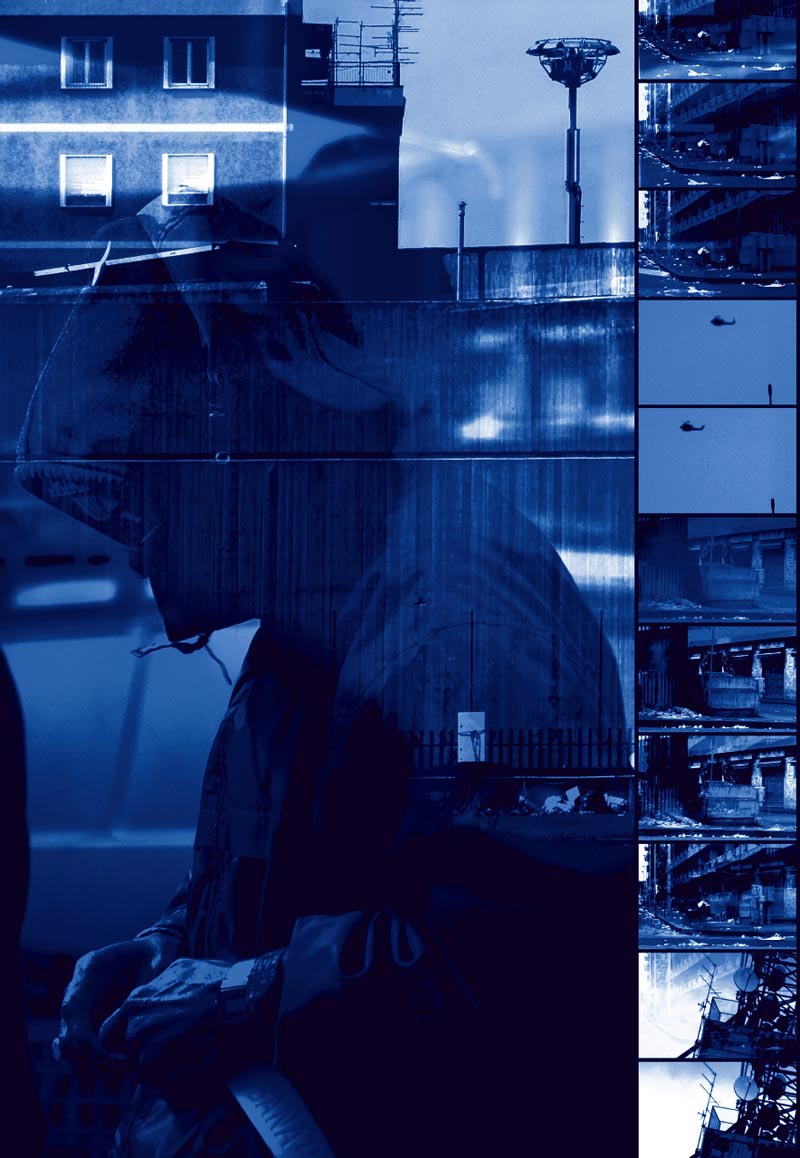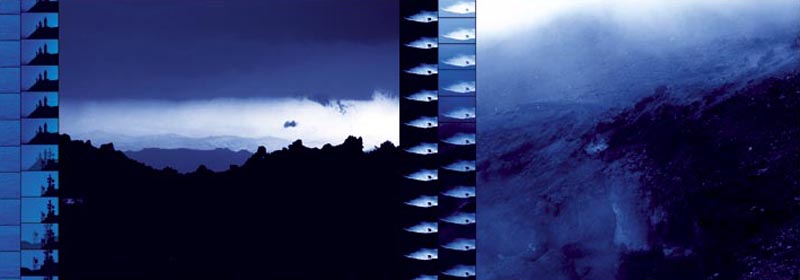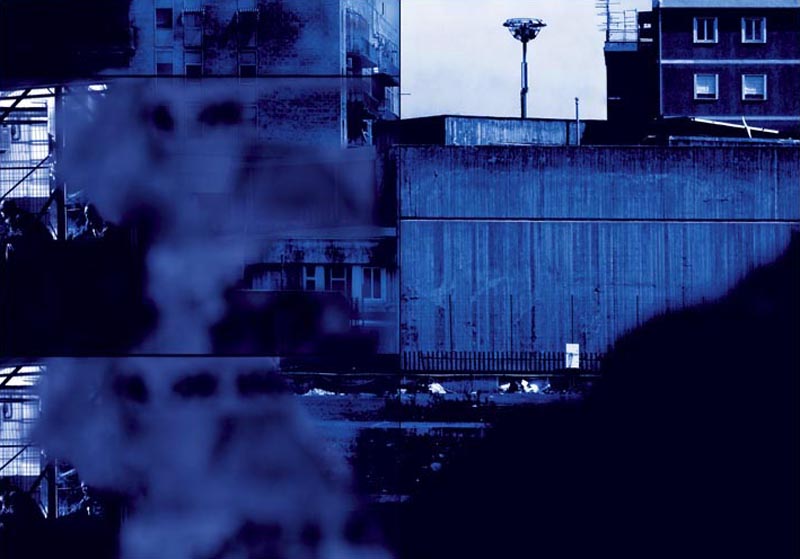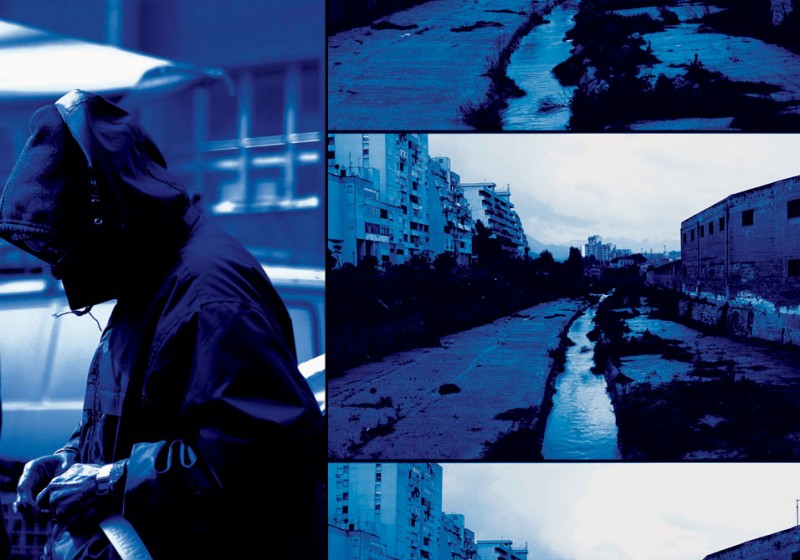Nadine Hilbert & Gast Bouschet
Collision Zone at the 53rd Venice Biennale
Luxembourg Pavilion, 2009
Images from the catalogue exhibition
© Bouschet-Hilbert 2009
–
Collision Zone is a multimedia installation presented at the 53rd Venise Biennale and created by GAST BOUSCHET and NADINE HILBERT. This installation featured videos of zones of urban decay and the humans that inhabit them, exploring the geopolitical situation of a world in constant movement. All scenes were shot near the Strait of Gibraltar and on the shores of Sicily at nighttime, references to the animal world. Images of garbage cans and crumbling buildings are cut in with shots of satellites, boats, surveillance and geological imagery of mountains, caves dripping water and insects caught in a web.
Collision Zone, the title of our work is a term used in plate tectonics. It designates a zone where continental plates clash. Tectonics tell us that continents move and the African continent is actually moving towards the European continent. These are very slow processes and Africa moves towards Europe at the speed of 4 or 5 centimeters per year. That is the same speed as our fingernails are growing. So, one day the Mediterranean Sea will be closed and the natural border between Africa and Europe will have disappeared.
Our title is of course also a metaphor for immigration issues at the border between Europe and Africa. The Mediterranean has become one of the most surveilled maritime spaces in the world. We filmed Collision Zone in the straits of Gibraltar and Sicily, where Africa and Europe are at its closest distance. So geopolitical and social concerns about the Mediterranean region are highly relevant to our project.
Collision Zone is not an observation or a documentary recording of a socio-political situation, but an experimental essay on our living on planet Earth.
GAST BOUSCHET and NADINE HILBERT were both born in Luxembourg. BOUSCHET takes and exhibits his photos and videos all over the world since the 1980s, particularly fascinated with the potential of the recorded image as a reflection, a comment and transformation of political and social-economic sign systems. Since 1998 he has worked with NADINE HILBERT. Together their practice has been developing into multimedia installations that seamlessly intertwine still and moving imagery. They use video and photography as magical weapons to make new connections between things and reveal hidden worlds.
I suggest you to watch Collision Zone in a live performance at Philharmonie Luxembourg in 2009 here.








comments are closed !